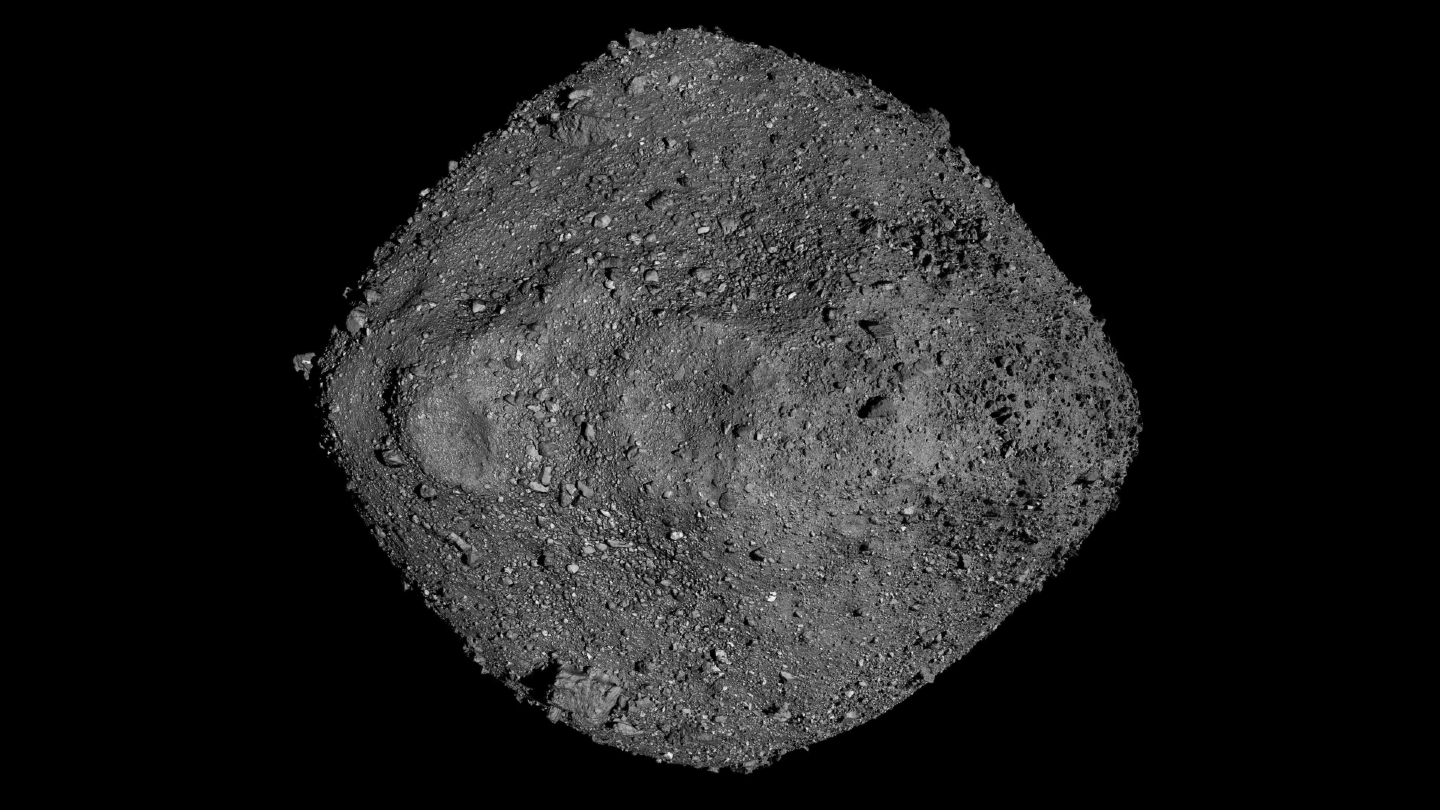A near-Earth asteroid offers clues to one dark matter theory
A hypothetical “fifth force” could tug on asteroids, if it exists. But the asteroid Bennu shows no signs that its orbit has been tweaked by such a force. That sets a ceiling on how strong a potential fifth force could be, physicists report September 20 in Communications Physics.
Scientists know of four forces in the universe: electromagnetism, gravity and the strong and weak nuclear forces. But some scientists suspect a fifth force might exist. For one thing, a fifth force might help explain a major unsolved physics puzzle: the identity of the unknown source of mass throughout the universe known as dark matter.
So scientists are on the hunt for unknown forces. And Bennu is a particularly suitable target, physicist Yu-Dai Tsai and colleagues realized. The asteroid’s trajectory was monitored closely by NASA’s OSIRIS-REx spacecraft, which collected a sample of the asteroid and returned it to Earth in 2023 (SN: 2/15/24). “Bennu has been tracked with astonishing accuracy for an extended period of time so that even slight deviations from its predicted path could provide evidence for new physics,” says Tsai, of Los Alamos National Laboratory in New Mexico.
In physics, forces go hand in hand with particles that transmit the force. For example, photons, particles of light, mediate electromagnetism. If a fifth force exists, its corresponding particles could play the role of dark matter. The Bennu data allowed scientists to search for a fifth force associated with particles that are very light, perhaps a millionth of a trillionth of an electron volt. (For comparison, an electron has a mass of around 500,000 electron volts.)
Measurements of additional asteroids could help scientists broaden the search to cover a range of potential masses. So while returned space rocks from Bennu can tell us about the matter making up objects in our solar system, its trajectory, and that of asteroids like it, could tell us about matter’s dark side.
Source link

